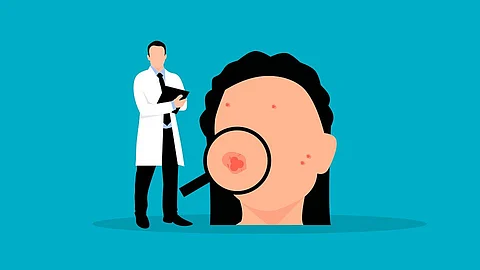Tie between man and machine
Using a web platform, 438 international dermatologists assessed nearly 1,500 melanoma images captured with a dermatoscopy. The dermatologists’ results were then compared with those from a machine-learning algorithm trained in classifying melanoma depth.
Among the dermatologists, overall accuracy was 63% for the correct classification of MIS, and 71% for that of invasive melanomas.
“Interestingly, professional background and experience in dermoscopy had no bearing on diagnostic accuracy in predicting melanoma thickness.
The area under the curve, which is a measurement ranging from 0 to 1 on performance was 0.83 for the pre-trained machine learning algorithm and 0.85 for the combined AUC of the individual readers’. Collectively, the dermatologists’ assessment performed on par with an algorithm trained in distinguishing MIS and invasive melanomas,” Polesie says.


